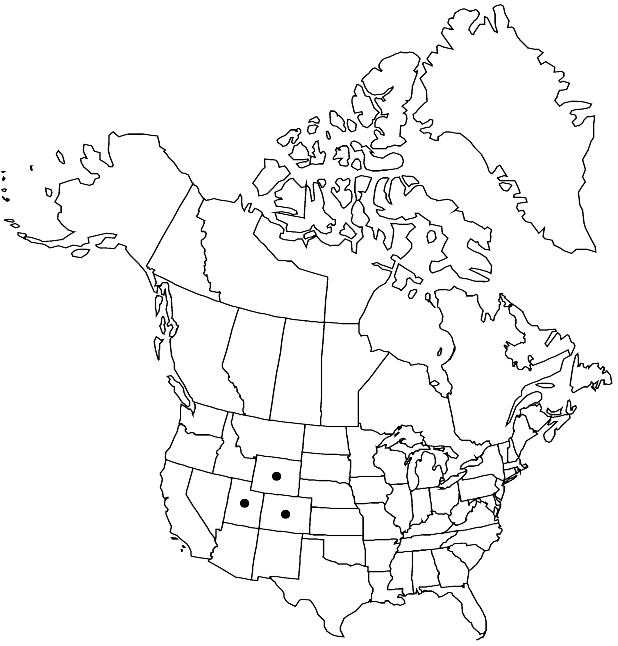Physaria subumbellata
Novon 12: 328. 2002.
Perennials; caudex simple or branched, (usually covered with persistent leaf bases, cespitose); densely pubescent, trichomes (closely appressed), rays distinct, usually bifurcate. Stems several from base, erect, (unbranched, slender), 0.1–0.6 dm. Basal leaves: blade rhombic to obovate, 2–4 cm, margins entire. Cauline leaves: blade linear-oblanceolate, similar to basal. Racemes dense (distally, subumbellate). Fruiting pedicels (divaricate-ascending), 3–5 mm, (densely pubescent). Flowers: sepals (yellowish), oblong to elliptic, 3.5–7 mm, (median pair usually thickened apically, cucullate); petals lingulate to spatulate, 4–7 mm. Fruits (erect), ovate to suborbicular, compressed apically (latiseptate), 3–4 mm; valves pubescent; replum ovate to obovate; ovules 4–6 per ovary; style 2–3 mm. Seeds plump. 2n = 10.
Phenology: Flowering Apr–Jun.
Habitat: Rocky high ridges, gravel and stony areas, juniper covered knolls, rock crevices, clay hillsides, pinyon-juniper areas, calcareous substrates
Elevation: 1600-2700 m
Distribution

Colo., Utah, Wyo.
Discussion
Selected References
None.